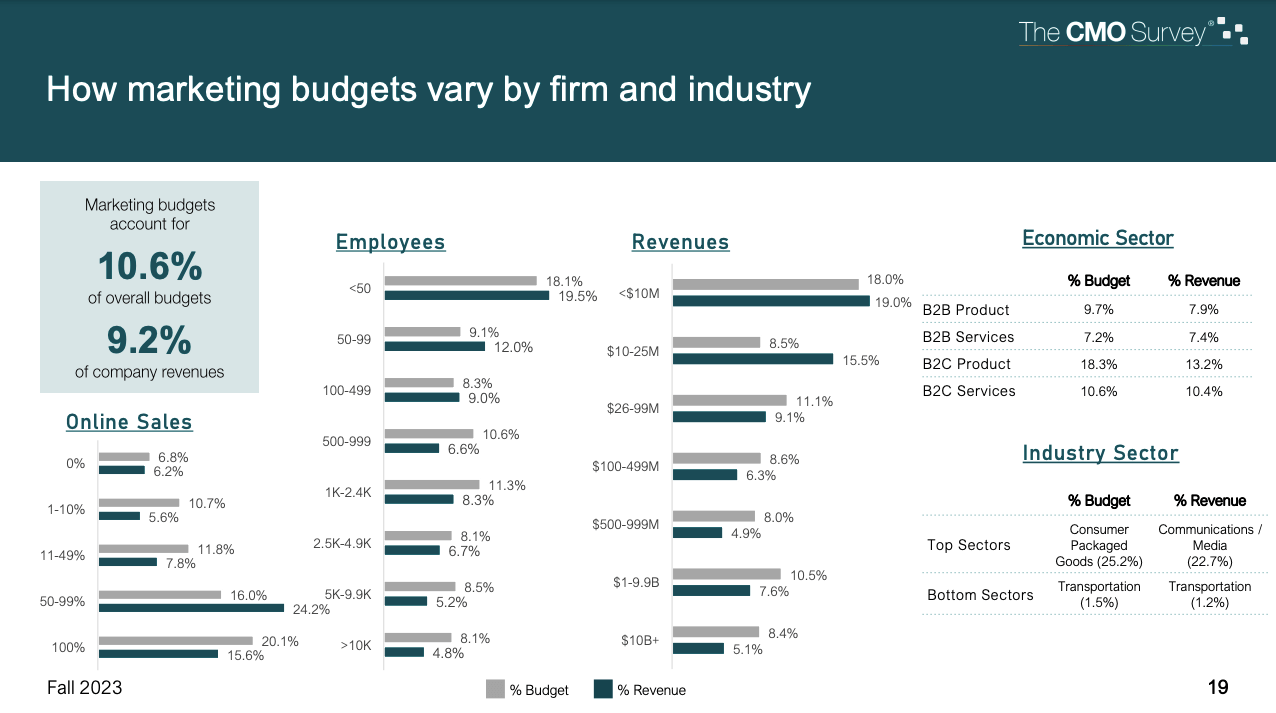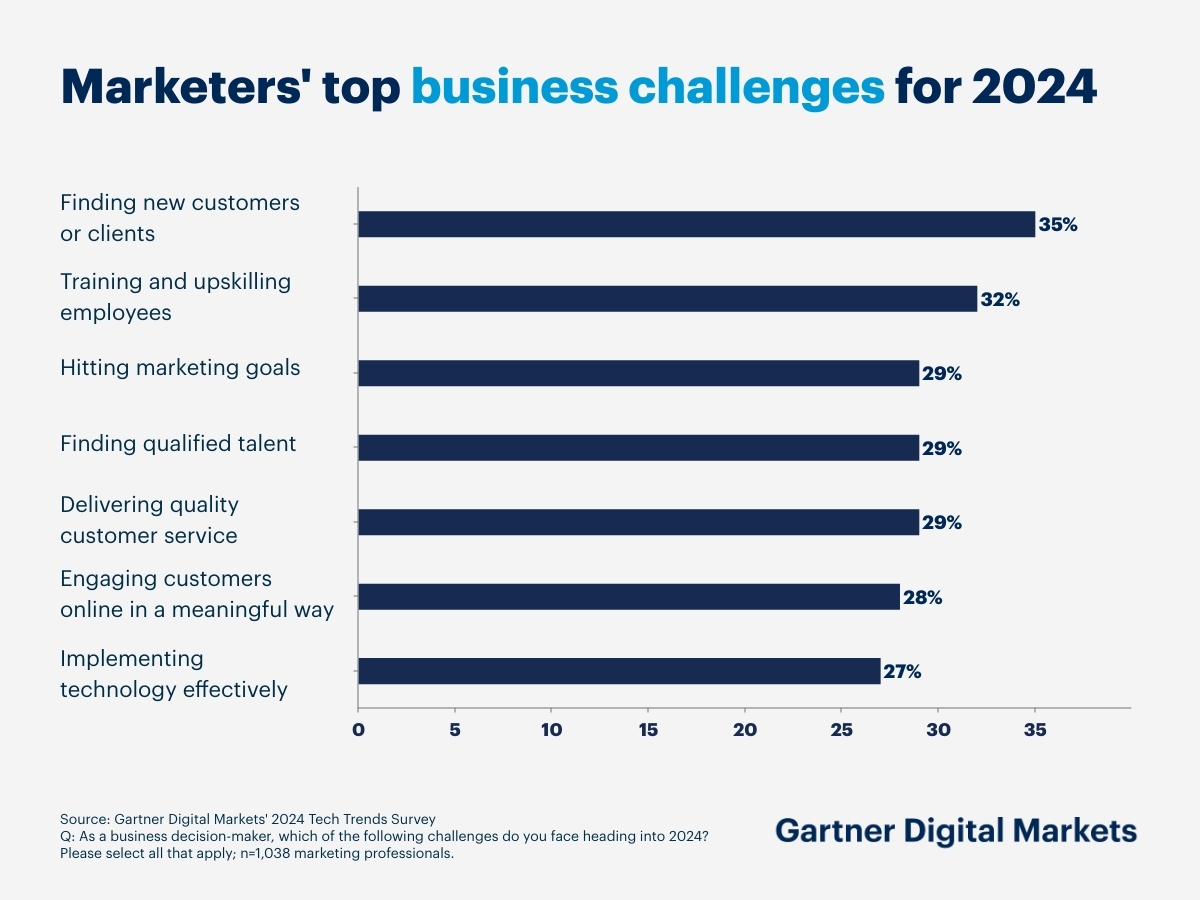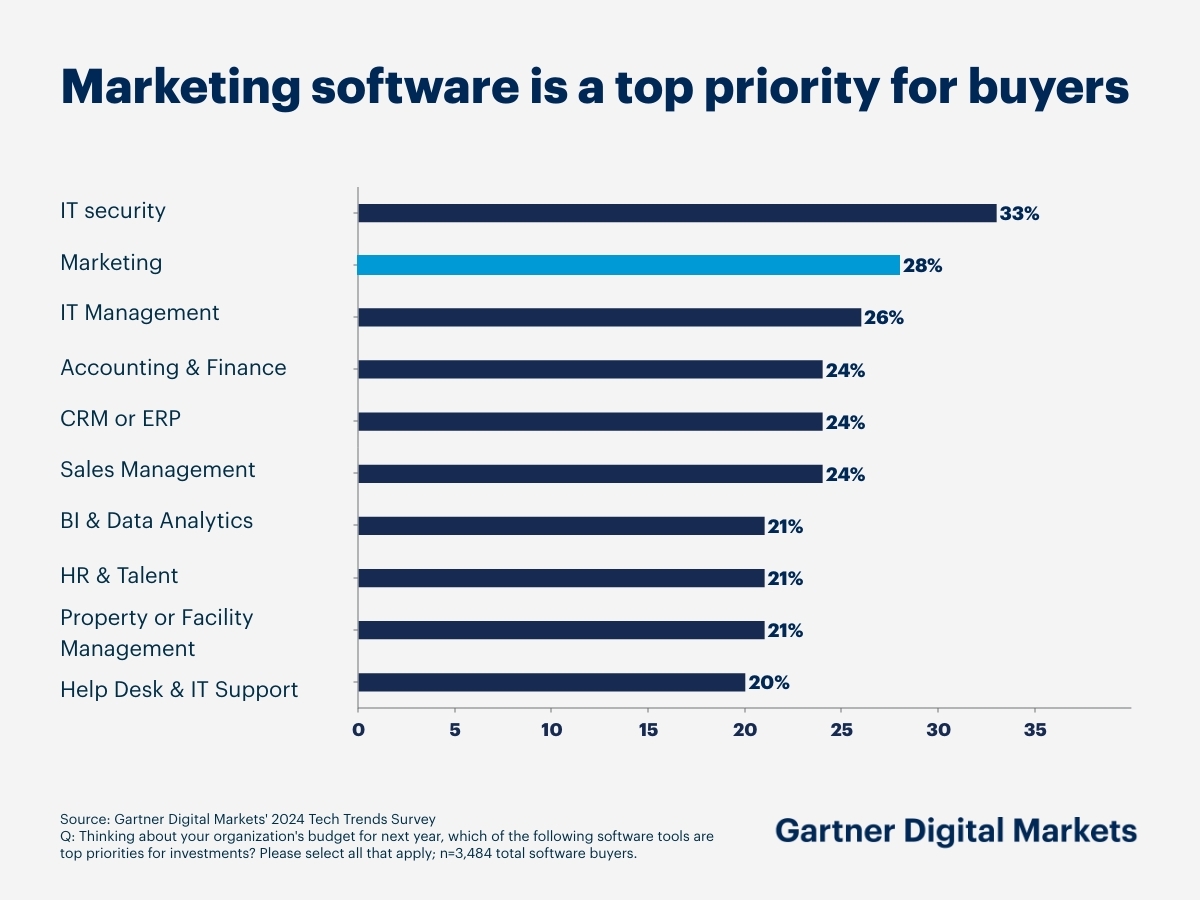A new year means new opportunities. But budget limitations can make or break even the best, and most thorough plans you’ve set to accomplish in 2024. CMOs have long encountered this problem. They’re expected to make every marketing dollar...
A new year means new opportunities. But budget limitations can make or break even the best, and most thorough plans you’ve set to accomplish in 2024. CMOs have long encountered this problem. They’re expected to make every marketing dollar count and deliver maximum impact on a limited budget.
In fact, in 2023, 71% of CMOs indicated that they did not possess an adequate budget to implement their strategies fully. Unfortunately, this trend is forecasted to continue as we move into 2024.
To maximize marketing impact on a limited budget, CMOs need to adopt a strategic approach that analyzes past results, identifies gaps, and enables data-driven decisions on where to allocate resources. It also requires constant monitoring and optimization to ensure that the budget is aligned with marketing goals and delivers maximum impact. Now that doing more with less is essential, strategic budgeting is the key to success for CMOs in 2024.
By carefully allocating resources and prioritizing strategic initiatives, CMOs can ensure that every dollar spent delivers a high Marketing ROI. Here’s our guide to help you get started.
Research your market
The 2023 CMO Survey found that marketing budgets account for more than 10% of their organization’s total budget, and contribute to about 9% of their organization’s revenue. However, these numbers varied based on the company’s industry.

Source: CMO Survey
Furthermore, with nearly 80% of marketers saying their industry changed more in the past three years than it has in the last five decades it’s more critical than ever to research your specific industry to maximize your marketing impact in 2024.
By conducting thorough research on target markets, consumer preferences, and competitor strategies, CMOs can make more informed decisions and allocate resources effectively. Furthermore, market research helps identify untapped opportunities, understand consumer needs, and tailor marketing campaigns for maximum impact.
Here are some places to start your research:
Customer Surveys: Gather insights directly from your target audience through surveys. Focus on understanding their needs, preferences, and perceptions related to your products or services.
Competitor Analysis: Evaluate competitors to identify areas where they excel or fall short. Analyze their marketing strategies, customer feedback, and market positioning to identify potential gaps for your brand.
Social Media Listening: Monitor social media platforms to gauge customer sentiments, opinions, and discussions related to your brand and industry. Identify recurring themes or issues that may indicate gaps in your current approach.
Website Analytics: Examine website analytics to understand user behavior, popular content, and areas of drop-off. This can provide insights into customer interests and potential gaps in your online presence.
Focus Groups: Conduct focus group discussions with a representative sample of your target audience. This qualitative research method can provide deeper insights into customer perceptions and reveal unmet needs.
Data Analysis: Utilize data analytics tools to analyze customer data, sales patterns, and market trends. Identify any patterns or anomalies that may indicate areas where your current strategies are falling short.
Customer Interviews: Conduct one-on-one interviews with key customers to understand their experiences, pain points, and expectations. This personalized approach can uncover specific gaps in your offerings or customer interactions.
Industry Reports and Studies: Stay updated on industry reports and studies to identify emerging trends, customer behaviors, and areas of innovation. This external perspective can help you align your strategies with broader market shifts.
Internal Collaboration: Work closely with other departments within the organization, such as sales, customer support, and product development, to gather insights. Collaborative efforts can provide a holistic view of customer interactions and identify gaps in the overall customer experience.
Examine previous results
Did your 2023 PR initiatives lead to an increased share of voice? Did your SEO program lead to a surge in web traffic? How many new customers did your organization acquire from X ads?
By analyzing the success and failures of previous campaigns, you can gain valuable insights into what works and what doesn’t. This data-driven approach allows you to allocate your resources more effectively, focusing on strategies and tactics that have proven to deliver a high Marketing ROI.
For example, businesses in the United States spent $232.70 billion on advertising in 2023, but not all advertising is created equal. If you found that you spent an enormous amount of money on paid Facebook campaigns that did not generate leads as expected, perhaps you should allocate more of your 2024 budget to organic search, which had the highest ROI according to 49% of marketers.
Of course, what works for one company may not work for another, which is why it’s important to measure Return on Ad Spend (ROAS) when evaluating all advertising campaigns and how much budget should be given to each platform.
This type of analysis is not limited to advertising alone. So make sure your demand generation team, communications team, social media team, content team, and every role under your domain can measure their impact according to your organization’s specific goals.
Create goals and KPIs that focus on revenue
Irrespective of the metrics you track—pipeline, website sessions, or conversions—in the current economic climate, it is advisable to anchor budget decisions in the real revenue generated by your activities.
This does not mean that other initiatives, such as brand awareness, should not be considered. It simply means that revenue should be at the core of how you build your KPIs. It’s critical to attribute revenue for all activities your team initiates whether it’s social media, email marketing, or ABM.
For example, if your organization’s goal for the first quarter of 2024 is to earn $30 million in revenue, and you found that organic search has historically yielded a significant number of high-quality leads, one of your goals for the quarter should be generating a large number of MQLs from organic search in order to contribute to that $30 million goal.
Hire new talent and help employees advance their skills
Hiring the right talent in the right domains is a key part of any successful marketing strategy. After all, it’s impossible to achieve your goals without the right people to do the job.
For example, to achieve the goal of doubling leads from content marketing and social media in 2024, assess your current capabilities in these areas and determine if additional human resources are necessary. Begin by evaluating the leads generated with existing resources and engage your team to identify what is required to double their output. If additional team members are necessary, allocate budget accordingly. Alternatively, if a full-time employee is not feasible within the budget, consider hiring a freelancer or agency to help meet the objectives.
Another critical piece of the puzzle to address is the skills gap. According to the World Economic Forum, approximately half of the world’s population requires acquiring new skills to adapt to changes brought about by emerging technologies. In addition, Gartner’s recent survey found that training and upskilling employees was the second most prominent challenge for marketing leaders across the board.

So if you’re finding your team members are lacking the necessary skills to accomplish your organization’s goals, you need to dedicate time to close that gap so you can accomplish more with fewer employees.
For example, perhaps your social media marketer is great at coming up with creative and engaging content that resonates with your audience, but they are not well-versed in analyzing social media data to measure business impact. You can address this by offering to sign them up for a course or providing them with a platform that does the analysis for them.
Whatever you do to address the skills gap, make sure your employees are empowered by the prospect of learning new skills and are given the time it takes to get up to speed and apply their learnings. If they are rushed or are made to feel that their hard work isn’t fully appreciated, they may lose motivation, which will have an adverse effect.
Be smart about the use of technology
According to Gartner, marketing software is a top priority investment for 2024, however, 62% have regretted at least one of their recent software purchases.

Technology can be a tremendously helpful resource to expand marketing effectiveness. But all marketing tools and platforms come at a price. It’s important to evaluate which marketing tools will contribute most to your goals, and which are simply burning cash.
For example, if you want to double leads generated from content marketing, you may want to invest in a paid AI tool specializing in writing content that matches your business’s brand voice.
This will help your team save time producing content, without sacrificing quality. However, if your content goals are less aggressive, a free tool like ChatGPT may be enough to help with your content initiatives in 2024. Bear in mind that free AI tools generally require more editing than their paid counterparts.
Some of the most popular areas to invest in marketing technology are:
Generative AI MAPS (Marketing automation platforms) CRMs (Customer relationship management platforms) Social media marketing and employee advocacy platforms ABM technology Google Analytics/SEO tools ChatBotsOf course, this is just the tip of the iceberg. The options for investing in marketing technology are limitless, yet each CMO must determine where the greatest impact will occur and where budget cuts can be made.
Putting plans into action: create your marketing budget in 2024
Navigating the challenges of 2024 requires CMOs to adopt a strategic and data-driven approach to budgeting. Understanding past results and conducting thorough market research will enable informed decision-making, allowing you to optimize their budgets effectively. Prioritizing initiatives that align with customer preferences and proven success, along with strategic hiring and technology investments, will position you for impactful and efficient marketing campaigns. By focusing on revenue-centric goals and adapting to the dynamic landscape,
CMOs can maximize the impact of their budgets in the coming year.
Generate and attribute more MQLs from social media in 2024. Contact one of our experts to learn how Oktopost’s comprehensive social media management and employee advocacy suite can help you achieve your marketing goals this year.





